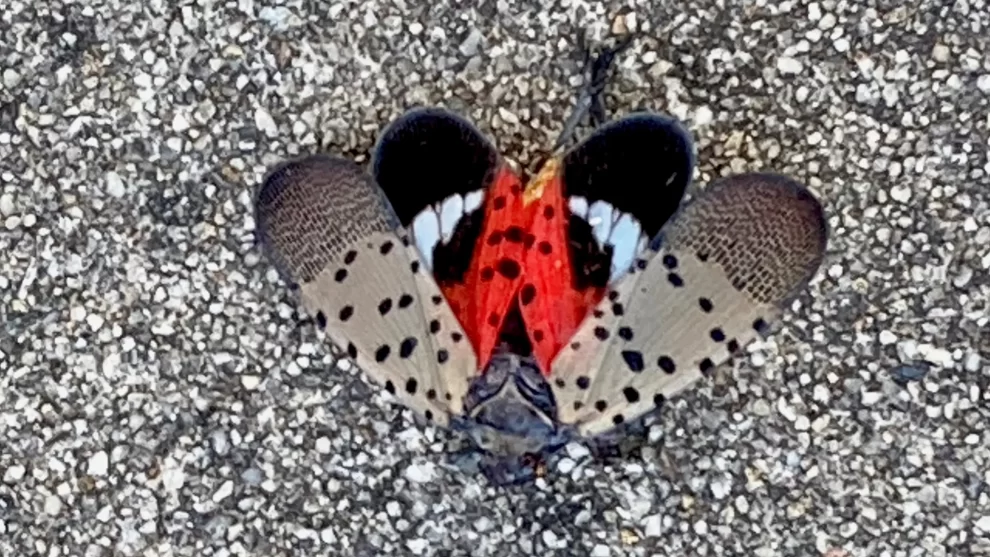Spotted lanternflies are spreading into northern Indiana along freight train lines with newly confirmed sightings in Elkhart, Porter and St. Joseph counties.
These recent sightings were verified by DNR officials in late October and mark the third region of Indiana where the invasive insects have been identified. DNR first found them in 2021 in Switzerland County and then in 2022 in Huntington County.
“All of the sightings of spotted lanternfly we’ve found in Indiana have been due to public,” DNR spokesperson Megan Abraham said. “They see these life signs of different invasive insects and report them to us and let us know when they’re popping up.”
There are only a dozen people in DNR’s entomology division, so having Hoosiers looking for signs of invasive insects spreading gives the group a good idea where to concentrate their eradication efforts, Abraham said.

What is the Spotted Lanternfly?
The spotted lanternfly was first found in Indiana in 2021 after traveling here from the Pennsylvania. It’s native to Asia but after being introduced to the U.S., has moved across many Eastern states along rail lines.
The invasive insect can damage fruit orchards, nurseries and logging and wine industries by destroying crops.
“Spotted lantern fly in particular has a bad habit of traveling with human help, and so we’ve been doing a lot of outreach in a lot of different areas,” Abraham said. “For example if you go camping, make sure that if you’re going in and out of quarantine areas you’re making sure there’s no egg masses or insects on your vehicles.”
The insects can travel on firewood, containers and other equipment if people aren’t careful.
The spotted lanternfly uses an invasive tree, the Tree of Heaven, as a host. These trees can be found all along freight rail lines since there’s not much invasive maintenance done along them, Abraham said.
How to report spotted lanternflies
DNR is using insecticides to help control the population and keep it from spreading. Spotted lanternflies feed by piercing and sucking on a host tree, and if the tree has been treated, the insect will die.
Most of the adult insects should be freezing off with the cold weather Indiana has seen, so there’s a focus now on destroying egg masses.
There still may be signs of a spotted lanternfly infestation as they create a sticky honeydew when they feed. This can then mold and someone walking by might see a sooty, black mold that is evidence the insects were there.
The lanternflies will lay large groups of eggs on the trunks of trees. The egg masses kind of look like a smear of mud, Abraham said, and these can be scraped off and then stepped on to make sure the eggs don’t hatch.

“If you spot anything, let us know you see them so we can keep track of where we are finding them in Indiana,” Abraham said.
Any Hoosier spotting one of these invasive insects can report it by contacting DNR’s Division of Entomology and Plant Pathology by calling 866-NO EXOTIC (866-663-9684) or emailing DEPP@dnr.in.gov.
Source : Indy Star





































